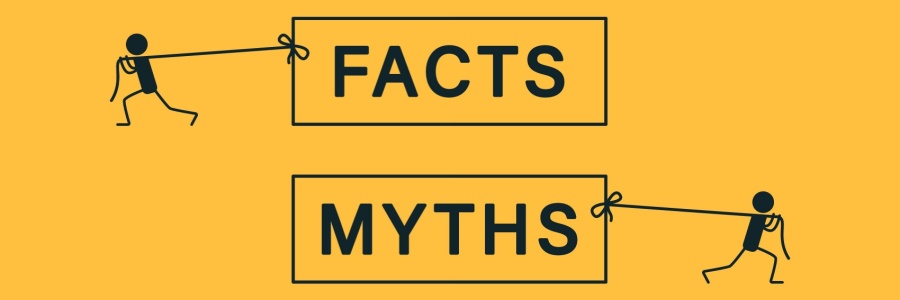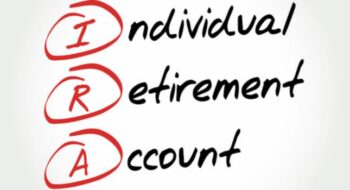Market ups and downs are a normal part of investing. But once you hit retirement, those swings feel a lot riskier—especially when you’re pulling money out of your portfolio. That’s where a volatility buffer comes in.
Think of it as a backup plan that gives you income during market downturns. A properly designed volatility buffer strategy can help you maintain steady income during bear markets—without having to sell investments at a loss.
In this post, we’ll break down what a volatility buffer is, how it works, and why it could be the safety net your retirement plan needs.
🔑 Key Takeaways
- Sequence of returns risk can derail your retirement if losses hit early.
- A volatility buffer provides stable income during market downturns.
- Common buffer tools: cash, short-term bonds, annuities, IULs, and more.
- Set clear triggers for when to use and refill your buffer.
- Diversification or bonds alone aren’t enough—buffers add protection.
The Problem: Sequence of Returns Risk
When you’re saving for retirement, average market returns matter. But when you’re withdrawing money in retirement, the order of those returns matters even more.
This is called sequence of returns risk—and it can crush a retirement portfolio if poor market performance hits early on. Even if your long-term average return is the same, bad timing in the early years can cause your savings to run dry far too soon.
Research shows that:
- Retirees who face negative returns in the first 5 years of retirement are over 30% more likely to deplete their assets prematurely than those who face losses later.
- For a 60/40 portfolio withdrawing 4% annually, starting retirement during a bear market can reduce the success rate of the plan by 20–25%.
That’s why a strategy like a volatility buffer isn’t just a luxury—it’s essential protection against bad timing.
What Is a Volatility Buffer?

A volatility buffer, as the phrase suggests, is a buffer against market volatility—a financial cushion that helps retirees weather market downturns without derailing their income plan.
Instead of selling investments at a loss, you pull from this buffer to maintain income and give your portfolio time to recover.
A volatility buffer can:
- 💸 Keep your income steady during market dips
- 🚫 Prevent selling investments at a loss
- 📉 Reduce the risk of running out of money
- 🛡️ Protect your long-term retirement plan
It’s a simple strategy with powerful results—especially when combined with a well-thought-out withdrawal strategy.
Types of Volatility Buffers
There’s no one-size-fits-all approach to building a buffer for retirement income stability. It’s about choosing reliable, non-market-correlated assets that you can lean on during rocky times. Common types include:
- 💵 Cash Reserves – High-yield savings accounts represent the most straightforward buffer option. They offer FDIC protection up to $250,000 per account, complete liquidity, and competitive interest rates that often adjust with Federal Reserve policy changes. The primary advantages include safety, accessibility, and simplicity.
- 📄 Short-Term Bonds or Bond Ladders – Short-term bonds are a popular choice for a volatility buffer since they’re less sensitive to interest rate changes than long-term bonds. A bond ladder takes this further by spreading investments across staggered maturities—like one, two, and three years—providing regular access to cash for income or reinvestment.
- 🛡️ Fixed Indexed Annuities – FIAs offer principal protection with the potential for market-linked growth. Your principal is guaranteed by the insurer, while returns are based on index performance. As part of the evolution of annuities, FIAs blend traditional income guarantees with modern market-linked growth—making them a smart fit for long-term volatility buffer strategies.
- 👨👩👧👦 Cash Value Life Insurance – An IUL for retirement builds cash value that can be accessed tax-free through policy loans, offering a tax-efficient buffer during market downturns. This allows you to borrow against the policy without triggering taxes, while still maintaining a death benefit and insurance coverage.
- 🏡 Reverse Mortgages – For retirees with substantial home equity, a reverse mortgage line of credit offers a unique buffer strategy. It provides tax-free access to cash without selling your home or adding monthly payments. While not for everyone, it’s a valuable option to consider as part of your retirement toolkit.
How to Use a Volatility Buffer in Retirement
A volatility buffer isn’t just about having extra cash—it’s about knowing exactly when and how to use it to cover expenses in retirement and protect your long-term income plan.
To make the most of your buffer, set up activation triggers—specific conditions that tell you when to pause portfolio withdrawals and use your buffer instead. Then, just as importantly, define recovery triggers to guide when to return to normal withdrawals.
🧭 Set Clear Activation Triggers
Having rules in place removes the guesswork and helps you act rationally during emotionally charged market events. Here are three types of triggers to consider:
- 📉 Market-Based Triggers: Use your buffer when the market experiences a significant drop. Examples:
- Major index (e.g., S&P 500) declines 10% or more
- Market enters official bear market territory (down 20% or more)
- 3-month rolling average return is negative
Why it works:
Protects you from selling stocks during deep downturns and gives your portfolio time to recover.
- 📊 Portfolio-Based Triggers: Base it on the value or condition of your personal retirement accounts. Examples:
- Your total portfolio falls 10%+ from its last high
- Your equity allocation drops below a pre-set threshold
- Your withdrawal rate (as a % of remaining assets) jumps above 5–6%
Why it works:
Customizes the trigger to your personal situation, not just market headlines.
- 💵 Income Need Triggers: Use your buffer when your portfolio can’t safely meet your income needs without exceeding a sustainable withdrawal rate. Examples:
- Your planned withdrawal for the year exceeds 4–5% of your portfolio
- Market returns + income needs = projected shortfall
Why it works:
Ensures you maintain a sustainable drawdown rate over the long haul.
🟢 When to Resume Normal Withdrawals
Just as important as knowing when to activate your buffer is knowing when to switch back to your portfolio.
Recovery Triggers:
- Markets have regained pre-decline levels
- Your portfolio balance has recovered to a target value
- Positive returns resume over a 3–6 month period
💡 Need Help Creating Your Volatility Buffer?

Creating the right volatility buffer strategy starts with knowing your income needs, risk exposure, and available tools.
A licensed financial professional can help you evaluate your options, and design a plan that protects your income through every market cycle.
How Much Should You Set Aside?
A common guideline is to hold 1 to 3 years’ worth of retirement income in your buffer. But the exact amount depends on:
- Your monthly income needs
- How much guaranteed income you already have (Social Security, pensions, annuities)
- Your risk tolerance and market exposure
- Whether you’re early or late in retirement
Common Misconceptions

- “I’m diversified. I don’t need a buffer.” – Diversification helps, but it doesn’t eliminate sequence of returns risk. You still need a plan for where to pull money from when markets are down.
- “Bonds are enough.” – Not necessarily. Bond values can drop too, especially in rising interest rate environments. A true volatility buffer includes safe, liquid, and stable assets.
- “Volatility buffers are only for conservative investors.” – Buffers benefit all investors by giving their riskier assets space to recover. Even aggressive investors can benefit from strategic reserves.
- “I’ll just cut spending if the market crashes.” – That sounds good in theory—but in practice, most retirees have fixed expenses. A buffer gives you flexibility without forcing uncomfortable lifestyle changes.
Final Thoughts: Build Your Buffer Before You Need It
The early years of retirement are the most vulnerable. And the best time to build your buffer is before you need it. Don’t wait for a downturn to find out your plan wasn’t as resilient as you thought.
A volatility buffer isn’t just a backup plan—it’s a proactive strategy to protect your income, preserve your portfolio, and give you the confidence to stick with your plan through any market cycle. It can mean the difference between running out of money and riding out the storm.
Tuesdays 7:00 pm ET
Webinar: New Rules of Retirement Income Planning
Retirement has changed. Are you prepared? Learn how to build lasting and reliable income.
Reserve My Spot
Frequently Asked Questions
When should I use my volatility buffer?
Use your buffer when the market is down significantly or your portfolio has lost value—especially if withdrawing from investments would lock in losses. Look for activation triggers like a 10%+ market decline or a spike in your withdrawal rate.
What’s the difference between a volatility buffer and an emergency fund?
An emergency fund is typically for unexpected expenses, while a volatility buffer is a planned reserve designed to replace income during market downturns. Both are important, but they serve different purposes.
Do I need a volatility buffer if I have a pension or annuity?
If your guaranteed income sources (like pensions, Social Security, or annuities) cover most or all of your expenses, you may need a smaller buffer—or none at all. But if you rely heavily on investments, a buffer is highly recommended.
Are volatility buffers only for the wealthy?
No. Volatility buffers benefit retirees at all wealth levels. In fact, they may be even more important for middle-income retirees, who have less margin for error. Whether you have $500,000 or $2 million saved, a buffer provides critical flexibility and protection when you need it most.




